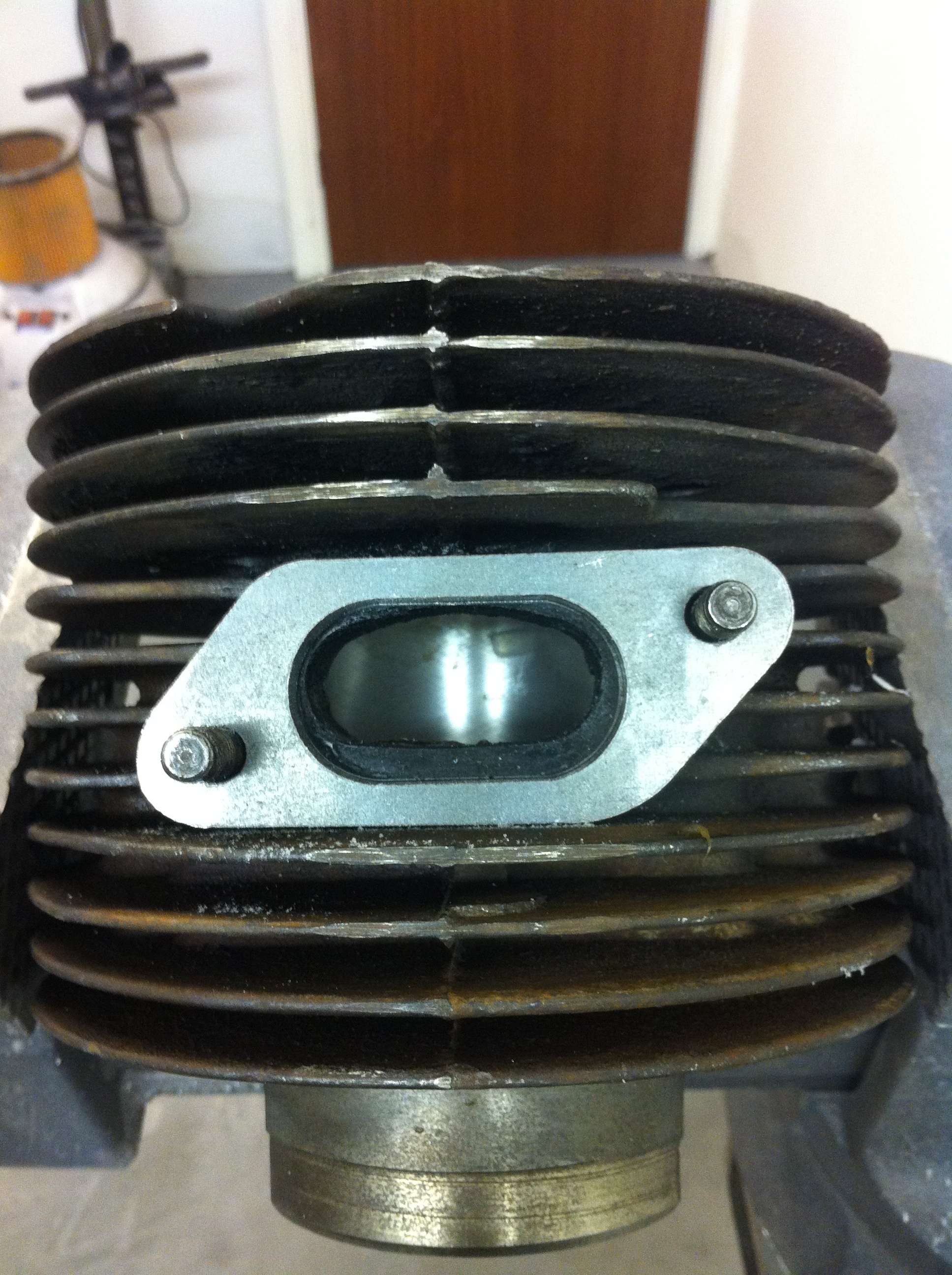LARGE BLOCK CAST IRON CYLINDERS
This section gives a traditional insight into what can be done to genuine Italian, Spanish and Indian cast iron oval type 200 cylinders. Today these conversions have been put on a back burner as there are so many new alloy kits available for the large block engine casing (these are covered more in depth on other sections)
Done correctly cast iron kits can give excellent results and years of life. In fact these conversions are making a comeback because of simplicity that has stood the test of time.
CYLINDER DIFFERENCES
There have been over the years a number of differences between 200 cylinders. These differences have been very hard to keep track of. The main differences between cylinders regularly worked by MB are listed.
- Early GT / TV 200 cylinders have no cut out notches on the top fin. There are 2 types; the early one has a very wide exhaust port, this is the most common type. The later type has a very small exhaust port width. Both cylinders have the lowest and largest inlet port compared to all other cylinders, these differences make the GT cylinder the easiest to identify. When using a GT cylinder it becomes difficult to choose a piston for it. If using an original 3 ring type piston the piston is prone to drop rings after 2000miles. If using a 2 Ring Asso or Vertex piston with the cut down inlet skirt the inlet timing becomes to big even for race tuning. But by using our MB Race-Tour piston these cylinders are excellent to reuse. It is also difficult to do the basic Honda 205 conversion because of the lowered inlet port without fitting a 110mm rod.
- SX 200, GP 200 (Italian) and Jet200 cylinders look the same, they both have 2 small cut outs on the top fin. These could be considered the same especially when using them for tuning. These suit all pistons and all conversions.
- Scooters India Limited (SIL) have their own cylinder, which MB have coined the factory stage 4 cylinder. This cylinder has good and bad points. The bad points are the transfer ports are not level and are different sizes and the ports look rough in appearance. Later cylinders are usually better than early 80’s cylinders. Despite this the port timings are very close to a stage 4 tune, the cast iron used is very hard making them hard wearing and long lasting, The port sizes are much larger than an Italian Sx and Gp cylinders making it impossible to do a standard, stage 1, 2 or 3 tune. By the time the ports are polished and transfers are matched the kit becomes a big spec stage 4/5. These cylinders come with two cut out notches on the top fin and are usually painted black.
- There have been pattern cylinders available. The Italian one has been coming through from MDP/MEC; it’s a copy of the early SX cylinder but is not machined correctly. The transfer and exhaust heights are not tall enough and these go slower. These are made from very poor cast iron and can totally wear out in 100 miles on a full race tune. Only use these for mild tunes with small exhaust ports.
- The other pattern cylinder was made by Autisa and used by Spanish factory, these are also identified by having no cut outs on the top fin, but on the inlet side of the base gasket face it has a lump cast into it. Put a base gasket in place and you will see this. Some of these cylinders were soft and wore out quickly, some were hard and were very good. This is hard to tell unless tuning them. Both type cylinders had nice sized ports and worked well with all pistons, unfortunately these are hard to get now.
MB DEVELOPMENTS 200 CYLINDER TUNED KIT RECOMMENDATIONS
Tv/Gt/SX/JET 200
Tuning is no problem but the original piston and rings are not very good for other than a mild tune. MB recommend converting to GP standard or race type crankshafts or a uprated con rod conversion then upgrade bearings and convert to a GP electronic ignition. There are a number of cylinder conversions available.
GP 200
Tuning is no problem but the original piston and rings are not very good for other than a mild tune. MB recommend converting the crankshaft to a race type or upgrade to a con rod conversion and convert to electronic ignitions. There are a number of cylinder conversions available.
200 STUD PATTERN ENGINES
There are a number of conversions ideal for all the 200 cylinders.
- 200 cylinders using Vertex, Asso, Borgo, Hepolite or Mahle 3 ring pistons. (MB don’t recommend any other makes unless it’s the last resort)
PROS: good pistons in standard form with a decent number of over sizes from 66 to 67.4mm. Ideal for stage 2, 3 and 4 tunes, (could be used for mild stage 5 tunes) Quality cheap pistons which makes for a cheap conversion. No cylinder machining is required. Fits onto standard or race type crankshafts.
CONS: These pistons use the standard cast iron type rings which are prone to break with wide exhaust ports or high mileage worn or rebored incorrectly the pistons can crack.
- 200 cylinders using Vertex or Asso 2 ring pistons and now Indian copy versions
PROS: These pistons are an improvement over the original 3-ring type, piston quality is the same but the rings are improved. The rings have less chance of breaking (the Indian copy pistons don’t have good rings). These pistons come with a large number of over sizes 66 to 67.4mm for Vertex and Asso pistons. Although Vertex and Asso pistons are creeping up in price and becoming rarer they are to be considered cheap pistons compared to Japanese or MB forged Race-Tour pistons. These pistons are ideal for Stage 2, 3, 4 or 5 tunes. No cylinder machining is required. Fits onto standard or race type crankshafts.
CONS: The Vertex, Asso pistons have 3mm removed from the inlet port side this then increases the inlet port timing which doesn’t always make for an improvement especially on standard engines, early GT cylinders or previously tuned for the standard skirt length pistons. (Some of these pistons have come with a full skirt) These pistons tend to crack skirts on high mileage motors or if the piston to bore clearance is excessive.
- 200 cylinders bored to 225cc using Vertex or Asso two ring pistons
PROS: The rings have less chance of ring breakage compared to the inferior GPM and Meteor 2 ring pistons. Vertex and Asso pistons although are creeping up in price are to be considered cheap pistons compared to Japanese pistons. No cylinder machining is required, but the head will need machining to suit. Fits onto standard or race type crankshafts.
CONS: Only a small number of over sizes are available 70 to 70.8mm. On the last over size piston the cylinder bore gets a little thin. The Vertex and Asso pistons have 3mm removed from the inlet port side this then increases the inlet port timing which doesn’t always make for an improvement especially on standard engines or cylinders previously tuned for the standard skirt length pistons. (Some of these pistons have come with a full skirt) These pistons tend to crack skirts on high mileage motors or if the piston to bore clearance is excessive.
- 200 cylinders bored from 66mm to 71mm using MB Race-Tour two ring pistons
PROS: Excellent strong forged pistons with more oversizes than any other piston available, infact it is the most versitile piston ever made for a Lambretta. They come in sizes from 66mm to 71mm with increments from of 0.5mm. These pistons come with a full skirt so inlet timings are reduced over the Asso/Vertex 2 ring pistons and can help previously over tuned cylinders with big inlet ports.
CONS: Nothing really apart from price, but each piston is hand made in the UK and we think unbreakable! Today genuine Honda and Wiseco pistons are costing more, so perhaps they are not so expensive.
- 200 cylinders bored to 205cc using Honda MTX 200 pistons
PROS: This kit was considered to be the best kit on the market depending on whom you talk to. It uses a very good piston with good rings. These pistons are ideal for Stage 3, 4, 5 or 6 tunes. The conversion fits onto a standard or race crankshaft with the standard length rod 107mm.
CONS: The piston is now ridiculously expensive compared to other pistons. There are limited oversizes 67 to 67.50mm. The rings tend to wear quite quickly and it is not uncommon for ring pegs to come out! The cylinder needs machining and an Indian cylinder head needs reworking to suit the kit. Once the cylinder is worn out then it could be scrap. MB would offer either the Suzuki 205 piston conversion or the Polaris 220 piston conversion so all would not be lost! And now with our modern MB Race-Tour pistons we offer varying Lambretta designed oversizes for the Honda conversion.
- 200 cylinders bored to 205cc using Suzuki PE250 2 ring pistons (not the RM250 1 ring piston which are the same apart from the rings)
PROS: This kit is excellent, the piston in genuine form is excellent, as is the Wiseco piston. There are a large amount of pistons available from 67 to 69mm, then the Polaris piston could be used. These pistons are cheaper than Honda MTX pistons. This kit could rectify worn out Honda 205 cylinders. This kit is ideal for Stage 2, 3, 4, 5 or 6 tunes.
CONS: The piston uses an 18mm gudgeon pin, MB don’t recommend piston bushes, but recommend the Vespa Ape rod conversion. With the rod conversion it is excellent and works in any type of crankshaft with a little work, this then makes the cylinder kit very good. The kit requires machining if using a 107mm rod or a cylinder packing plate is required with the 110mm Ape conversion, making the kit expensive short term, long term it is a cheap long lasting kit. We now offer over sized Suzuki Race-Tour pistons with 16mm gudgeon pins to renew an old Suzuki converted cylinder kit.
- 200 cylinders bored to 210cc using Kawasaki 440 Jet Ski pistons
PROS: This kit is excellent with a large amount of rebores available from 68.5 to 70mm. These pistons are cheaper than Honda MTX pistons. This kit is ideal for Stage 4, 5 or 6 tunes.
CONS: This kit requires the con rod to be converted to a Yamaha 115mm putting an extra price on the kit. A small amount of machining is required. Or use a 110mm con rod with a bit more machining. Or this kit can be done with a lot of machining which could run on a standard con rod but we don’t recommend it.
- 200 cylinders bored to 220cc using Polaris 750 pistons
PROS: This kit is excellent, the piston is excellent. There are an amount of pistons available from 69.75 to 70.75mm. These pistons are cheaper than Honda MTX pistons. This kit is ideal for Stage 2, 3, 4, 5 or 6 tunes. This kit could rectify worn out Honda 205 cylinders but would require a con rod change or piston bushes.
CONS: The piston uses an 18mm gudgeon pin, MB don’t recommend piston bushes, but recommend the Vespa Ape 110mm rod conversion! With the rod conversion it is excellent and works in any type of crankshaft with a little work, this then makes the cylinder kit very good. On the last over size piston the bore gets a little on the thin side. The kit requires machining as does the head and a cylinder packing plate is required making the kit expensive short term, long term it is a cheap long lasting kit.
- 200 cylinders bored to 225cc using Suzuki TS250 pistons
PROS: This piston is excellent and is available in various makes all been easy to get and are cheap in comparison to other pistons. This kit is making a comeback through cheap Ebay pistons.
CONS: The piston uses an 18mm gudgeon pin, MB don’t recommend piston bushes, but recommend the Vespa Ape 110mm rod conversion! With the rod conversion it is excellent and works in any type of crankshaft with a little work, this then makes the cylinder kit a very good kit. On the last over size piston the bore gets a little on the thin side. The kit requires machining using the 107mm rod making the kit expensive short term or a packing plate with the 110mm Ape rod, long term it is a cheap long lasting kit.
Other piston kits are available and have been used over the years, occasionally these kits rear their ugly head.
- Kawasaki 230/240
This kit uses a Kawasaki H2 750 or Wiseco Jet Skis big bore piston which starts at 71mm with over sizes to 72mm+. These pistons are really too big to use in a cast iron cylinder without a lot of work or watercooling so MB do not recommend them. Ideally these kits need a 115 or 116mm con rod or lots of machining. This piston has been used to good effect in alloy cylinder conversions though.
- Yamaha 200
This kit uses various versions of the DT or IT175 type of Yamaha pistons at 66mm to give 200cc, this originally was a reed valved piston and required two windows welding up before the kit could be started, it really is an old fasioned way of doing a kit and is not worth doing. Its a good cheap piston if converting to a reed valve.
All the above piston conversions can be used with standard 58mm or long stroke 60, 61, 62 or 64mm crankshafts, but there is a lot more setting up with port timing and cylinder top heights when you use these cranks but these can be used to your advantage.
Other pistons come and go and I’m sure there will be more found.
What you need to consider when using a non Lambretta piston is;
- Piston size and oversizes
- Ring peg positions
- Drill holes/cut outs
- Crown height
- Gudgeon pin size
- Availability
- Price
CYLINDER KIT RECOMMENDATIONS
The above cylinder conversions have been explained quite thoroughly, today a lot of cylinders have been totally butchered or just worn out and there has been for a number of years a need for a replacement 200 cylinder with the carb on the standard side to replace the TV200 (2 versions) SX200 (various versions) and the GP200 (Italian) and Indian (SIL) cylinders. In the past there has been after market cast iron oval port cylinders made from Autisa in Spain or MDP/MEC in Italy along with other Italian manufacturers, we have even seen some 3 wheeler cylinders turn up but don’t use these as the Inlet manifold on the port is all wrong. These days there are a number of newer Alloy cylinders to replace the older oval port cast iron cylinders. These cylinders come from various manufacturers and suppliers from the UK, Spain, Italy and India. Information on these kits can be found elsewhere.
- MB Race-Tour
- Rapido
- Mugello
- SR/KA
- Casa
- Gori
PISTONS
In the above lists MB recommends various types of pistons. These are used for their reliability of piston and ring and availability. Pistons come and go, they dry out of supplies and sometimes get remade. In the last few years new pistons are coming through from India and the Far East as performance pistons, these are too new to say much about these, but be careful using them.
These 3 ring 200cc pistons come in sizes; 66, 66.4, 66.6, 66.8, 67 and 67.4mm WHEN AVAILABLE are as follows;
- Vertex
- Asso
- Borgo
- Hepolite
- Mahle
Other makes are available but MB wouldn’t choose to use them unless it’s a last resort. These have 2 or 3 cast rings and should come in sizes of; 66, 66.2, 66.4, 66.6, 66.8, 67, 67.2 and 67.4mm. Today there has been some newer pistons turning up from India and Taiwan, some are good and some are bad and too many to list or identify at the moment (6, 2011)
- GPM
- Meteor
- Speed
- Siam
- Comec
- Dinamin
These pistons are considered an improved by using modern 2 rings.
- MB Race-Tour forged pistons 66, 66.5, 67, 67.5, 68, 68.5, 69, 69.5, 70, 70.5 and 71mm
- Vertex 200 to 225cc pistons, available sizes are; 66, 66.4, 66.6, 66.8, 67, 67.2, 67.4, 70, 70.4, 70.6, and 70.8mm
- Asso 200 to 225cc pistons, available sizes are; 66, 66.4, 66.6, 66.8, 67, 67.2, 67.4, 70, 70.4, 70.6, and 70.8mmm
- Honda 205cc pistons; 67, 67.25 and 67.5mm
- Suzuki 205cc pistons genuine; 67, 67.5 and 68mm
- Suzuki 205cc pistons Wiseco; 67, 67.5, 68, 68.5 and 69mm
- Kawasaki 210cc pistons Wiseco; 68.5, 69, 69.5 and 70mm
- Polaris 220cc pistons Wiseco 69.5, 70.25 and 70.75mm
- Suzuki 225cc pistons Japanese 70, 70.5 and 71mm
- Suzuki 225cc pistons Wiseco 70, 70.5 and 71m
CYLINDER KIT RECOMMENDATIONS
Over the years we have looked at what people actually want, most wanted a Scooter to have a cruising speed of approximately 60-mph with a top speed of 70ish, the scooter must be good for two up riding, touring, used daily for work or be a quick street racer. It must be long lasting and at the same time be reasonably cheap to buy. We are basically talking of a stage 4 or 5 tune, but like other dealers we found it very difficult to make up these kits whatever the piston used and keep them on stock waiting for the customer to turn up. Tuning 100 cylinder kits a year is not that hard, but when the phone goes, customers call, delivery people call and your employees need you, work life gets very difficult!
- For a cheap bolt on kit MB have perfected the Indian SIL Factory cylinder conversion. This conversion has proved popular over the years. We have recommended this as it fits the criteria of most customers
- MB Improved the idea by remaking a copy of an Italian GP200 cylinder and with much improvement with our own MB Race-Tour cylinder
- There are other cylinders listed elsewhere
Others want a lot more, they want higher speeds and high horse power for this there are other kits which could do you, we recommend the TS1 kits or there are the Monza or RB kits.
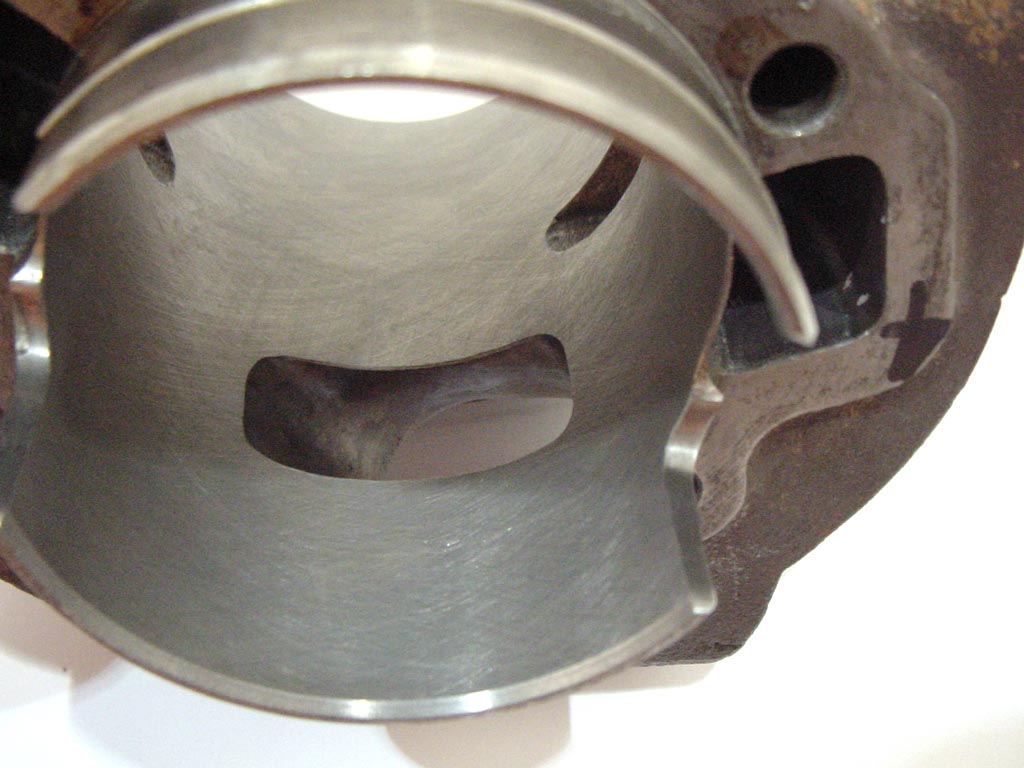
MB Stage 4 tuning to Cast cylinders
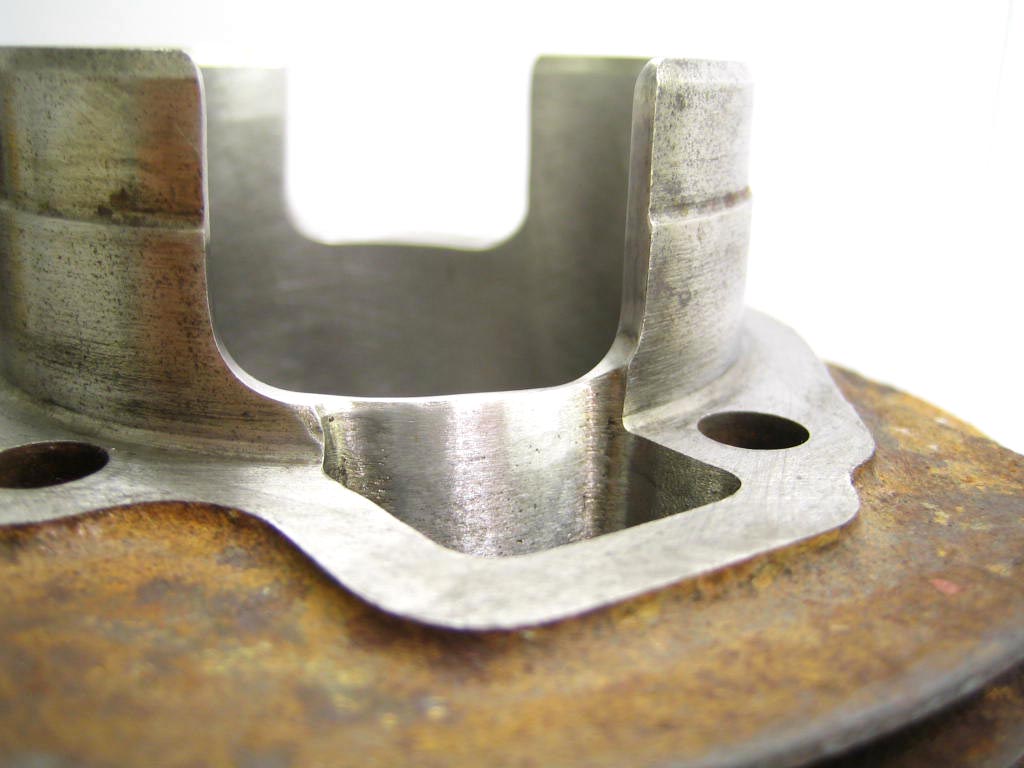
Stage 3 / 4 transfer feeds
.jpg)
Stage 5 porting to an old Cast Oval exhaust port
.jpg)
Stage porting and flowing to a cast cylinder
MB Exhaust flange, showing how much needs removing from an exhaust port
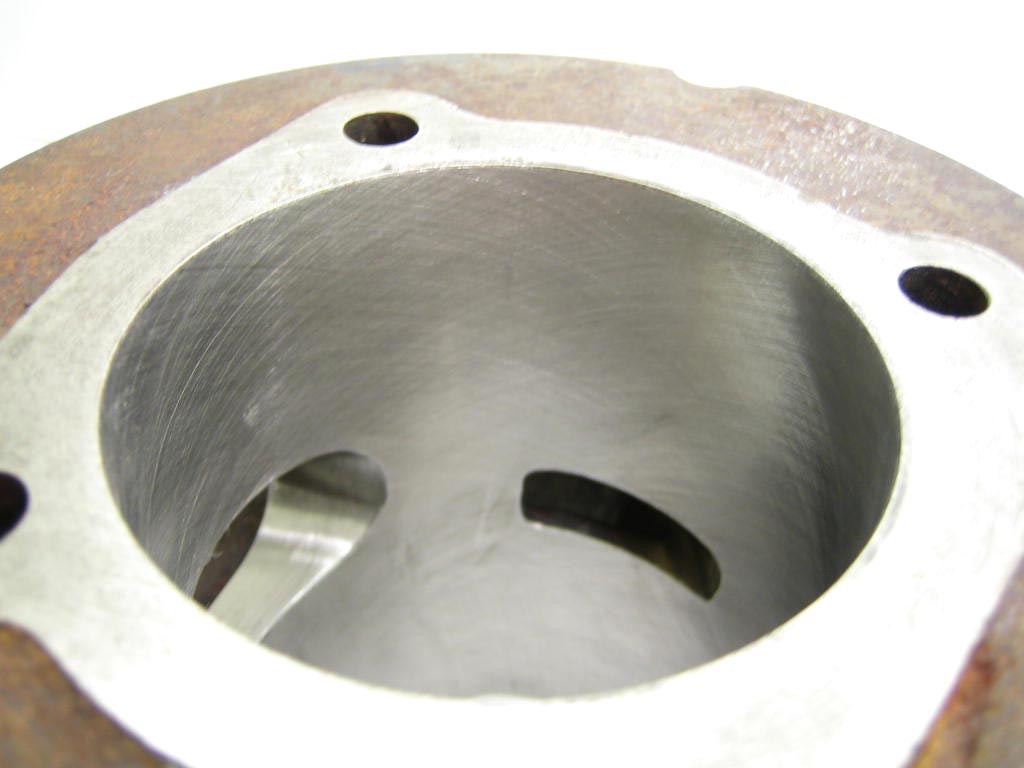
Finished rebored and honed cylinder bore
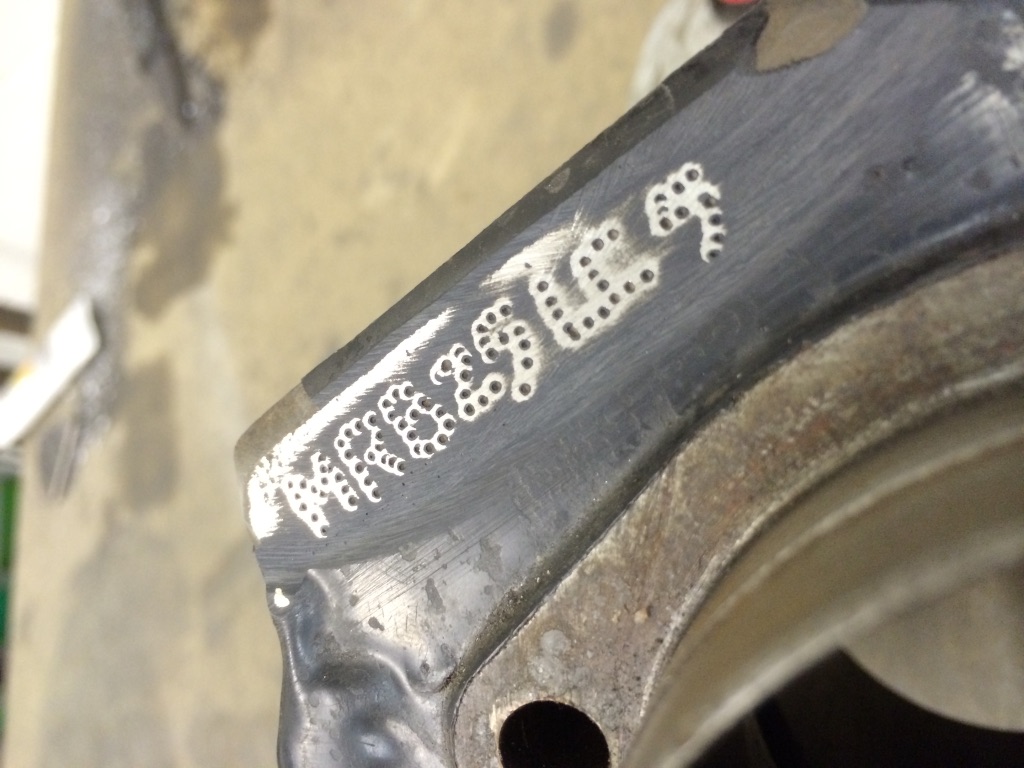
MRB25 LC number 5! Wow now over 2200 tunes!
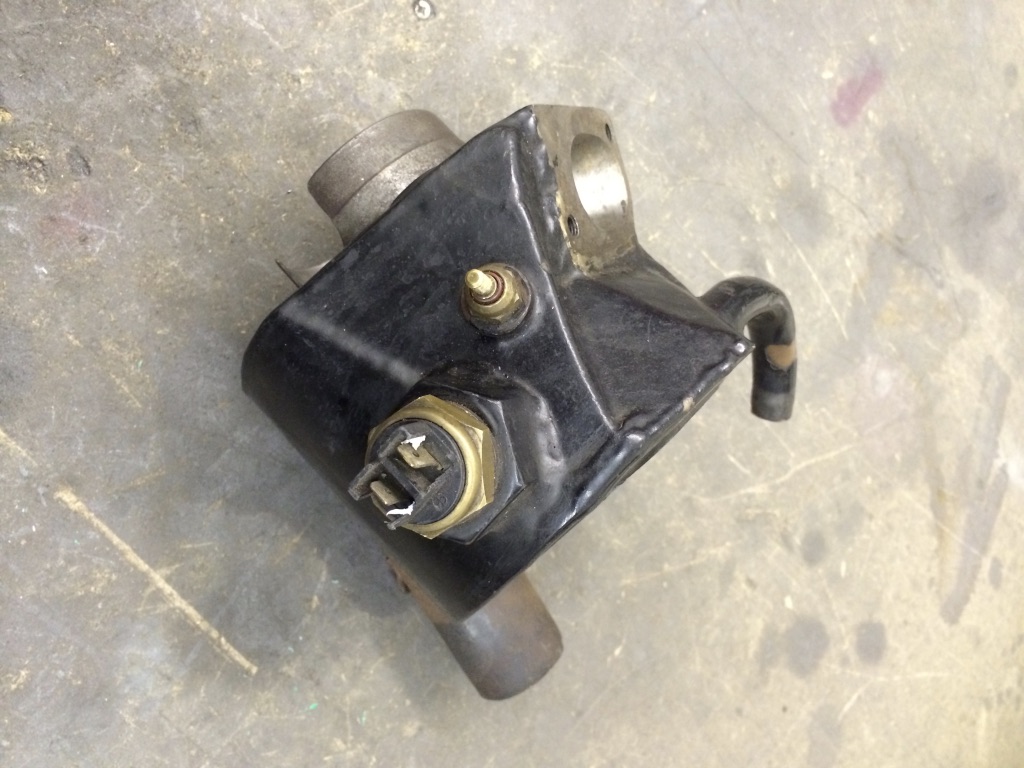
A very early 1980s MRB Liquid cooled 200
If you want to ask a question email Mark on mark@scooters.co.uk and say Tuning options for Lambretta cylinder 200 – 250,






